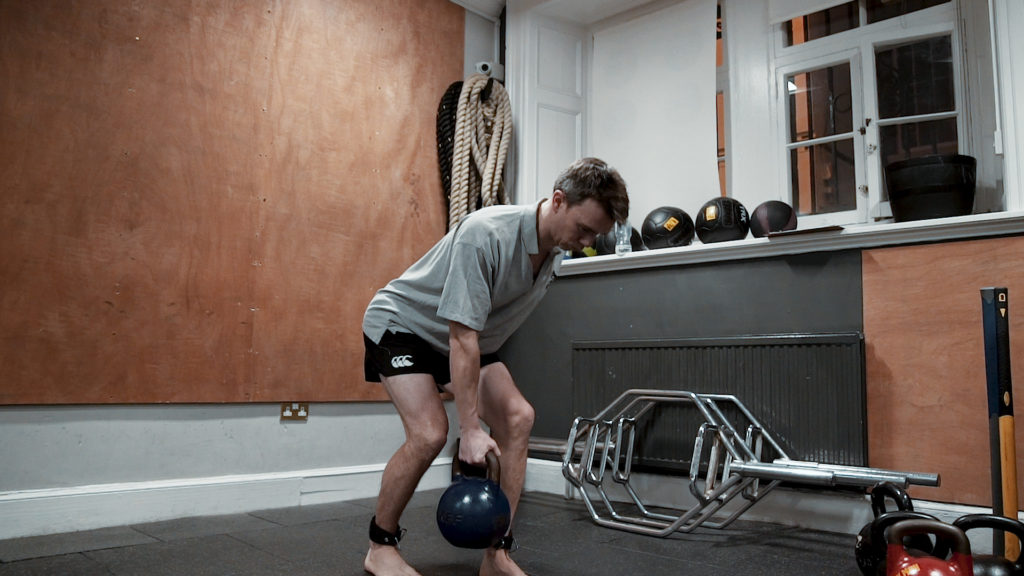Audience: People experiencing or fearing back pain whilst training
Overview: Most back pain is caused by a combination of overloading, poor recovery and lifestyle factors such as stress. It is addressed by first looking at our attitude and behaviour towards training and where our blind spots are.
Time to read: 4 minutes
Part 2
Most back pain is caused by a combination of overloading, poor recovery and lifestyle factors such as stress. Poor technique, poor mobility, poor flexibility can all contribute but are rarely the actual cause.
When something begins to hurt, or isn’t reacting the way we feel it should, it is human to begin to catastrophise and wonder if there is something very wrong. Is it also human to want to ignore the issue, especially if it hasn’t quite yet began to really impact what we want to do.
People who love to exercise and play sports use it for many things: from stress relief, to building confidence, to social interaction and community. It provides a lot of things, and it is an anchor in our life. When that anchor is threatened or removed it can be very disruptive. That’s brings a lot of difficult things with it.
The idea of having to take a step back, maybe change what we are doing, have to add some things in to our already saturated week, or worst of all have to face up to something we have been ignoring, frequently leads to avoiding the issue entirely.
It would just be easier if it went away over time….
However, it’s not going to go away because it is us, and our behaviours that are driving it.
In the first section we went over some questions that we’ll go into in more depth in this second part of the article. We’ll hopefully shed some light on what it is you can do to help yourself. If you haven’t given yourself a chance to ponder over the questions, my advice would be to do that now before reading any further. Here are the questions:

- Is the pain or discomfort progressively getting worse?
- Are you fearful of your back getting badly injured like it has in the past?
- By not addressing the pain what are you avoiding?
- What would need to happen for you to take action?
1. Is the pain or discomfort progressively getting worse?
As I mentioned at the beginning, most back pain is caused by a combination of overloading, poor recovery, and lifestyle factors such as stress. If the pain hasn’t been a sudden and sharp onset but has been gradual and getting worse, or you are anticipating a sudden and sharp onset like a ‘PING!’ then it’s time to take a look at these areas:
- Stress
- Mood
- Sleep
- Fatigue
- Muscle soreness
Notoriously, it is very difficult to be objective with yourself, and most people are terrible at realising when something has gone too far, especially individuals who are driven. “Persevere”, “push through”, “just get on with it” are messages we pick up when it’s time to move beyond something uncomfortable.
Having the ability to push through a pain barrier, put your nose to the grindstone and ignore how you feel can be very helpful in many circumstances, but it is not a full proof method that can be used for every situation, especially not one where your back is screaming at you to do the opposite.
2. Are you fearful of your back getting badly injured like it has in the past?
If you have felt a sudden twinge in your back like a ‘PING!’ happen in the past, chances are it left a lasting impression. It can be frustrating, debilitating and bleed into many areas of our life, not only making training difficult if not almost impossible, but making normal day to day tasks significantly harder. We don’t want to go back there…who would?! The more times it happens, the greater the concern.
This usually leads to avoidance, of certain positions, certain postures, and exercises. Trying to guard the area the whole time, yet unbeknownst to us, making the are weaker and more sensitive. We can develop what feels like a mental block to that area. Unable to trust that it can be loaded safely.
So we either avoid, or the opposite, we go for broke and try and push through resulting in the inevitable. We are then left trying to find something to blame, or an explanation for why the area doesn’t seem to be getting any better.
This is when the area has become sensitised, and we need to gradually build back up the tolerance. This usually means gradual loading and focusing on decreasing stress and increasing recovery.
If this sounds a lot like you, do you know what your usual attitude and response to this situation is? Do you avoid? Ignore it? Feel hopeless and frustrated when it happens again, despite everything you have tried?
Maybe it’s time to lay out a clear and gradual plan and path of progression, neither avoiding the area, nor over stressing it.
3. By not addressing the pain what are you avoiding?
This can be a difficult one to digest and take on board but a lot of the time there’s a reason, one that is of benefit to us, for not addressing the pain. People do things because somehow and in some way it serves them. It may not always be in the best way, but it’s doing something.
Maybe addressing the pain would mean having to take a step back from training and you don’t want to experience that gap or void. Maybe you would need to look at your rest and recovery and change your current strategy. Maybe you are getting a bit older, need to adjust your training to progress, and you aren’t ready to face up to that.

Usually, we aren’t addressing the pain because the current situation feels like a better one, versus what we might have to do, change, or look at in order to address the pain.
4. What would need to happen for you to take action?
What is your limit or what would need to be affected in your life, for you to take action and start to address the pain? What would get you to the point where you say, “O.K. that’s enough”? How much worse would things be for you if it got to that point? Finally, do you see that point as a possibility or inevitable?
If it’s a possibility, then what do you see changing or happening that would take away the back pain? Why would it not be inevitable?I f you see it as inevitable, then what is holding you back from addressing it right now?
Finally, what would you need to do to take action?
Do that.
Hopefully you find this article helpful. Please sign up to our information e-mails for notifications about future articles related to this topic.
